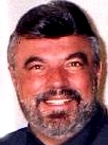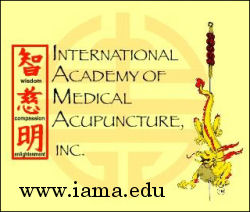Acupuncture & TCM Articles

Acupuncture Articles
by John A. Amaro L.Ac., Dipl.Ac.(NCCAOM), DC
 Dr. Amaro is an internationally known author, lecturer and practitioner beginning his practice of Acupuncture and Chiropractic in 1971. He has led 13 diplomatic Acupuncture study tours of The People's Republic of China escorting more than 500 doctors and practitioners. He has personally studied Acupuncture in nine separate Asian nations. Dr. Amaro is an internationally known author, lecturer and practitioner beginning his practice of Acupuncture and Chiropractic in 1971. He has led 13 diplomatic Acupuncture study tours of The People's Republic of China escorting more than 500 doctors and practitioners. He has personally studied Acupuncture in nine separate Asian nations.
He has received Certification in Acupuncture through the Columbia Institute of Chiropractic in 1973. This was one of the first Acupuncture postgraduate education programs for physicians in North America commencing in 1972.
He has been certified by the Waseda Acupuncture College in Tokyo, Japan in 1974 and graduated from the Chinese Medical Institute, Kowloon, China in 1976. He had previously taken postgraduate studies at the Tai Chung Medical School Taipei, China 1973.
John A. Amaro L.Ac., Dipl.Ac.(NCCAOM), DC
Without question, some of the most dynamic acupuncture points on the human body are known as the Hua Tuo Jia Ji points. These points, philosophically and clinically, may effectively treat every condition of the human system.
They are extremely easy to locate and use. They respond not only to the acupuncture needle but through any type of percussion such as a neurological reflex hammer, Wartenberg pin wheel, tuning fork, green and red laser, percussive instrument, gua sha, tei shein (noninvasive needle) or firm digital pressure. Any form of stimulation works absolute wonders in clinical practice.
These classic points are located just half a cun, or human inch (the distance across the widest part of the patient's thumb) bilateral to Du Mai (GV) (midline over the vertebral spinous process) from T1 through L5. Classically there are 17 pairs of points (34 points total) attributed to Hua Tuo. Within the last 2,000 years, these points have extended both upward through the cervical spine and downward across the sacrum. The points in the cervical and sacrum are simply known as jia (lining) ji (spine).
The points were discovered by the legendary physician Hua Tuo, who was born in 110 A.D. and lived to the almost unprecedented age of 97. He was reputedly murdered by the ruler of the Wei Dynasty after he suspected an assassination attempt when Hua Tuo suggested brain surgery for his severe headaches. Hua Tuo was rumored to have found the secrets of exceptional health and longevity.

Only the 17 bilateral points attributed to Hua Tuo carry his name as Hua Tuo Jia Ji. These points are located at the level of the spinous process of the vertebrae 0.5 cun from the midline. The shu (associated points) of the 12 primary meridians beginning at T3 are located 1.5 cun from the Du Mai midline. These points work startlingly similar to the meric system of chiropractic. Chiropractic's explanation of its exceptional clinical response in most health conditions is that of an insulted nerve at the level of the intervertebral foramina due to displacement of the vertebrae (a vertebral fixation). These spinal fixations will cause both hypertonicity and hypotonicity of the paravertebral musculature, resulting in neurothlipsis or so-called "pinched nerve." The involved nerve will affect the organ and tissue. It is well known in chiropractic that the third thoracic vertebrae has a direct response on anything in the level of the lung to include the bronchi, pleura, chest, breast, etc. This same explanation extends up and down the spine to affect all organs, muscles, bones and structures of the body.
Hua Tuo, on the other hand, developed a system of healing which appears to be remarkably similar to chiropractic but 2,000 years prior to the discovery of both osteopathy and chiropractic. By the stimulation of these specific points at the precise vertebral level, virtually any condition can be positively affected. That does not mean to say these points will cure everything, however the success rate in using these points at the precise locations is nothing short of miraculous. The key is understanding the exact level of the vertebra in relation to the organ and tissue it controls. For example, Thoracic 6 is specific to the Stomach, whereas Thoracic 7 and 8 are specific to the Spleen/Pancreas. The jia ji points of C7 is specific to the thyroid, as well as the shoulders and elbows.
The classic acupuncture point known as BL10 is 1.3 cun bilateral to DU15, which is just below the pseudo spinous of the first cervical vertebrae. However the jia ji point, located 0.5 cun lateral to DU15, will affect the pituitary gland, scalp, brain, inner and middle ear, and sympathetic nervous system. An "energetic subluxation" at this point will manifest itself in neurasthenia, insomnia, hypertension, migraine, chronic tiredness, vertigo, headaches and susceptibility to colds.
These reflexes are very specific and have been a vital part of certain specialty practices of chiropractic for well over a century. The stimulation of the Hua Tuo Jia Ji points are not routine or well known in the chiropractic profession. However, the reflex levels are classic and extremely well established. Chiropractic physicians will routinely adjust the vertebrae by hand or cause hyperstimulation through automatic or manual adjusting devices.
I always advise practitioners to stimulate not only the Hua Tuo Jia Ji point but the GV and, if appropriate, the shu point during treatment. Gua sha is an exceptional way to stimulate these points as it is quick, easy and effective.
In as much as the specific reflex areas of the spine are generally only used by specialty chiropractic practices, it is assumed that most acupuncture practitioners are unaware of these specific locations. Electro-meridian imaging (EMI) will direct the practitioner to the precise vertebral level since any meridian involvement will always reflex directly to the spine. This is an exceptional way to determine general levels to be treated. However, if one knows the specific areas affected, it is a matter of academia to select the proper level or combination of levels. Contact me directly with your request for a specific meric reflex chart and begin using this absolutely incredible system of acupuncture. You will be amazed at the response.
|
